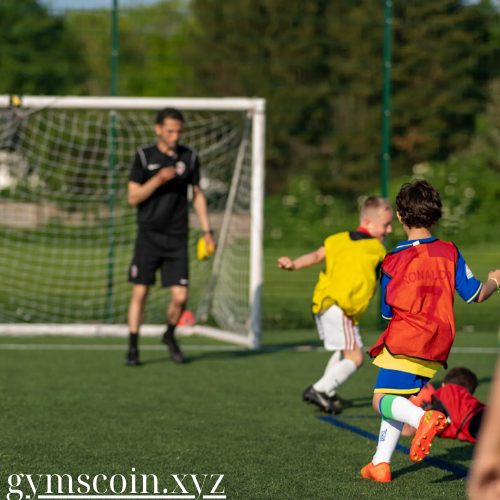Techniques & Coaching
Youth Football Training: Effective Drills and Techniques for Young Players
Training young football players requires a mix of fun, skill development, and understanding of the fundamentals. It’s crucial to create an engaging environment that fosters both growth and enthusiasm for the game. Here’s a guide to effective drills and techniques for youth football training that focus on essential skills while keeping the sessions enjoyable.
1. Dribbling and Ball Control
a. Dribbling Drills
- Cone Dribbling: Set up a series of cones in a straight line or zigzag pattern. Have players dribble through the cones using different parts of their feet. This drill helps improve close ball control and coordination.
- Obstacle Course: Create a fun obstacle course with cones, hurdles, and other markers. Players navigate the course while dribbling to enhance their agility and control.
b. Ball Control Drills
- Juggling: Encourage players to juggle the ball using their feet, thighs, and head. Start with a few juggles and gradually increase as they improve. This drill enhances touch and coordination.
- Passing and Receiving: Pair players up and have them pass the ball back and forth, focusing on accurate passing and controlled receiving. Incorporate various distances and angles.
2. Passing and Shooting
a. Passing Drills
- Wall Pass: Have players pass the ball against a wall or rebounder and receive it back. This helps with passing accuracy and control. Increase the distance or use different techniques (e.g., inside of the foot, outside of the foot).
- Target Passing: Set up targets or markers at different distances. Players aim to pass the ball to hit the targets, improving precision and distance control.
b. Shooting Drills
- Target Shooting: Use small goals or markers within the goal to practice shooting accuracy. Players aim to hit the targets from different angles and distances.
- Shooting on the Move: Practice shooting while dribbling or running to simulate game situations. Encourage players to focus on timing and technique.
3. Defensive Skills
a. Basic Defending Drills
- 1v1 Defending: Pair players and have one attack while the other defends. The defender works on positioning and tackling, while the attacker practices dribbling past the defender.
- Shadowing: Practice shadowing an opponent by mirroring their movements without trying to win the ball. This helps with positioning and anticipation.
b. Group Defending
- Defensive Shape: Work on maintaining a solid defensive shape with the entire team. Practice closing down space and working together to protect the goal.
- Zone Defense: Introduce basic concepts of zone defense, where players are responsible for covering specific areas of the field.
4. Physical Fitness and Agility
a. Agility Drills
- Ladder Drills: Use an agility ladder to perform various footwork patterns. This improves speed and coordination. Incorporate forward, lateral, and diagonal movements.
- Cone Drills: Set up cones in different patterns (e.g., zigzag, square) and have players navigate through them quickly. This enhances agility and change of direction.
b. Speed and Endurance
- Sprints: Include short sprints in training sessions to build speed and acceleration. Set up a series of short sprints with brief recovery periods.
- Endurance Runs: Incorporate longer, steady-state runs to build overall stamina. Make it engaging by adding relay races or fun competitions.
5. Game Understanding and Tactics
a. Small-Sided Games
- Small-Sided Matches: Play small-sided games (e.g., 3v3, 4v4) to encourage more touches on the ball and improve decision-making. These games help players understand positioning and teamwork.
- Fun Challenges: Introduce fun challenges or mini-tournaments to keep players engaged and encourage competitive play.
b. Basic Tactics
- Positioning: Teach young players the basic concepts of positioning and spacing. Use simple explanations and visual aids to help them understand their roles on the field.
- Communication: Emphasize the importance of communicating with teammates. Practice calling for the ball, directing play, and organizing defensively.
6. Mental and Social Development
a. Confidence Building
- Positive Reinforcement: Use positive reinforcement to build confidence. Celebrate successes and encourage players to learn from mistakes.
- Goal Setting: Help players set achievable goals and track their progress. This motivates them to work hard and improve.
b. Teamwork and Sportsmanship
- Team-Building Activities: Incorporate team-building activities to strengthen team bonds and encourage cooperation.
- Sportsmanship: Teach the importance of good sportsmanship, including respect for opponents, referees, and teammates.
Conclusion
Effective youth football training focuses on developing fundamental skills, improving physical fitness, and fostering a love for the game. By incorporating a variety of engaging drills and techniques, you can help young players build a strong foundation in football while enjoying the process. Remember to keep the sessions fun and encouraging, and to celebrate the progress and achievements of your young players.

